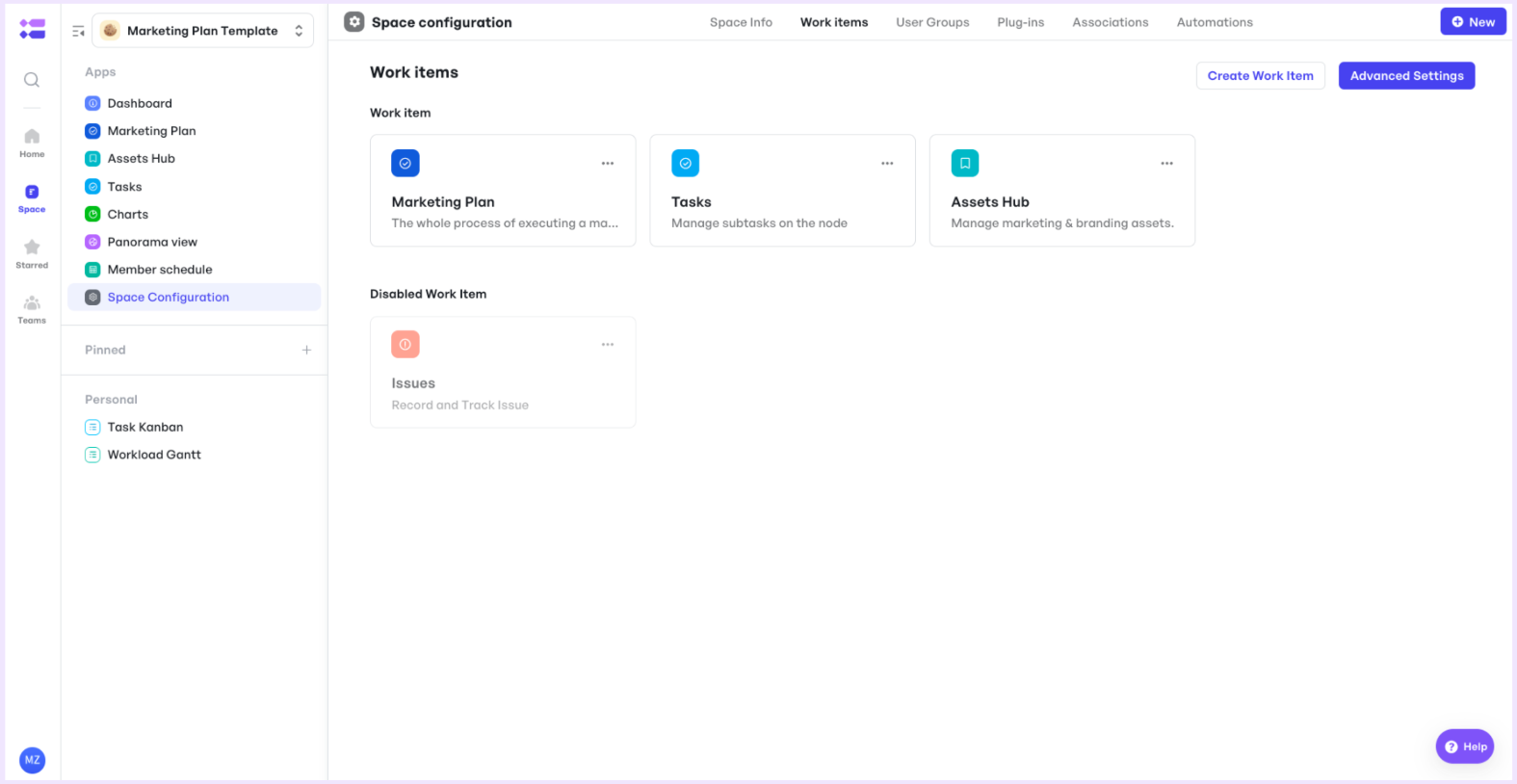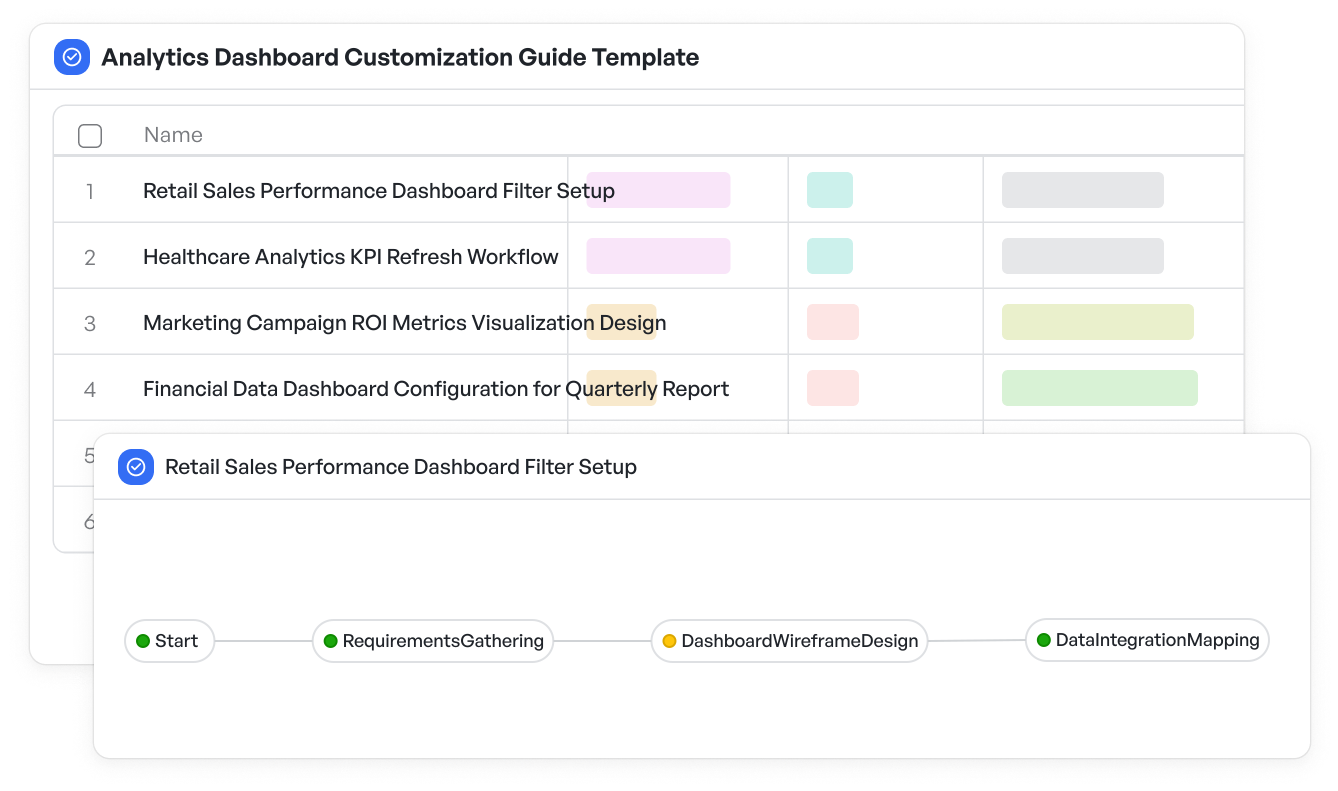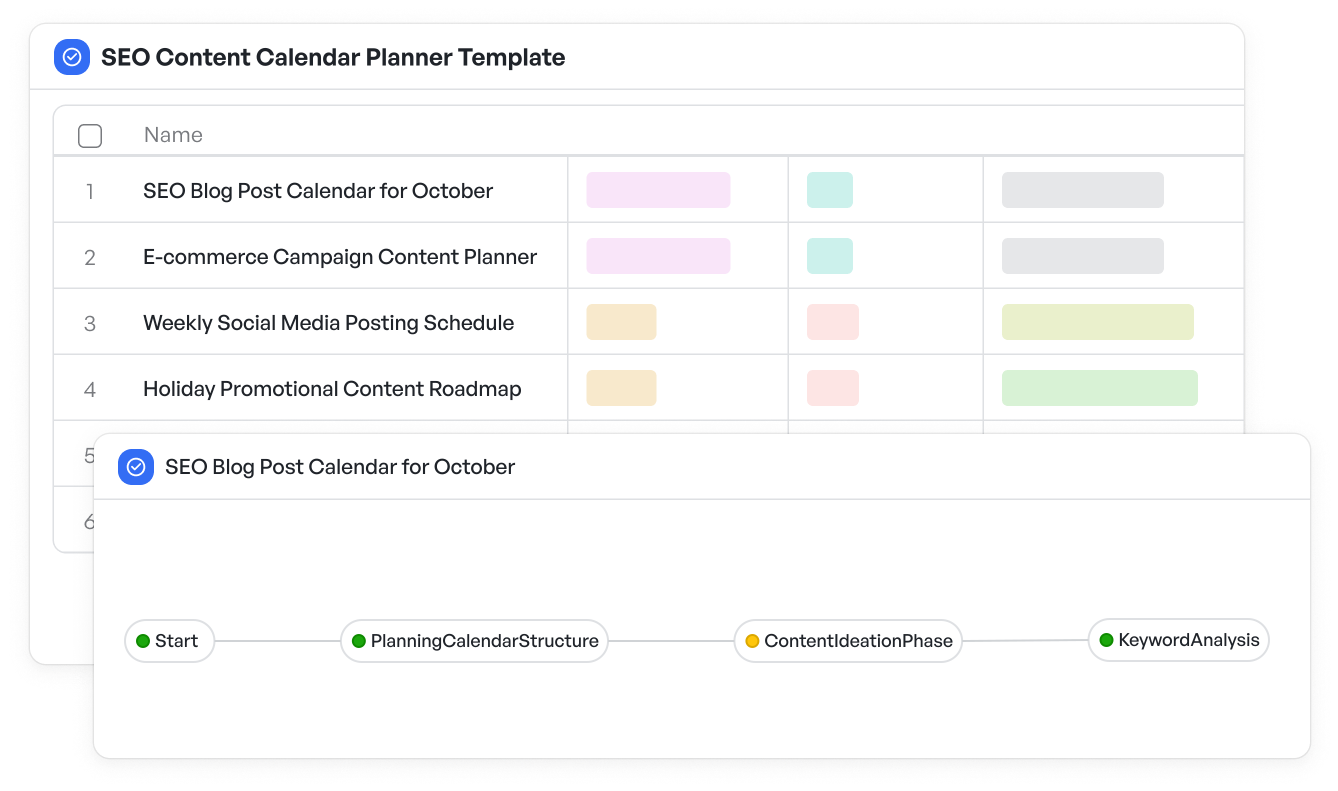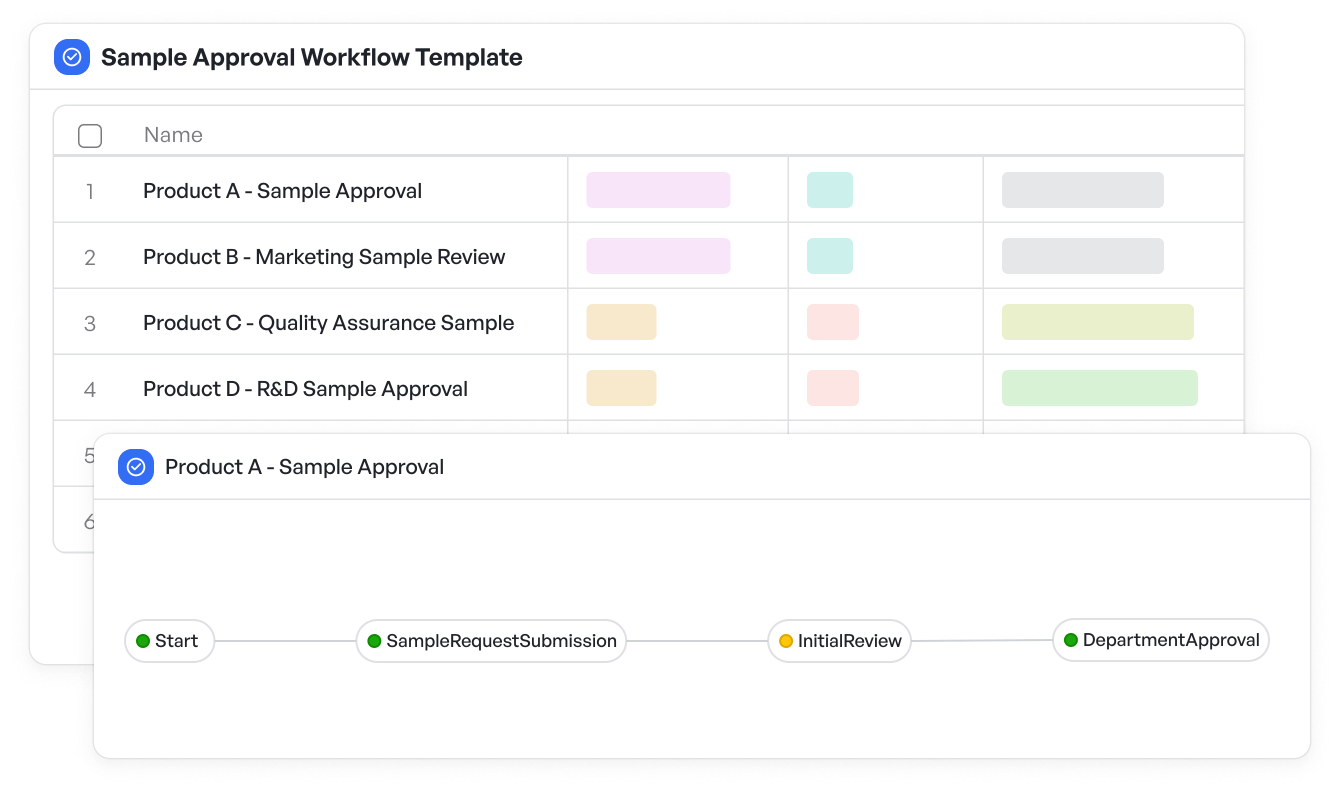How To Implement Lean In Marketing: Streamlining Campaigns For Better Results

Marketing departments in mid-market and enterprise organizations face constant pressure to deliver impactful campaigns on tight deadlines and budgets. From coordinating multiple stakeholders to managing complex workflows across teams, inefficiencies easily creep in, slowing down progress and causing missed opportunities.
Adopting lean principles in marketing helps organizations reduce waste, improve collaboration, and accelerate campaign delivery without compromising quality. For mid-market and enterprise teams leveraging software tools, lean in marketing offers a structured approach to optimize workflows and drive measurable outcomes.
In this article, we’ll explore what lean in marketing means for marketing teams in these organizations, why it matters, and how visual workflows can make implementing lean practices manageable and effective.
 Marketing plan in Meegle
Marketing plan in MeegleWhat Does Lean in Marketing Mean?
Lean in marketing applies concepts originally developed in manufacturing and operations to marketing functions. Its focus is on eliminating non-value-added activities, simplifying processes, and continuously improving how marketing work gets done.
Marketing teams often face challenges like duplicated efforts, unclear task ownership, bottlenecks in approvals, and misaligned priorities. Lean in marketing encourages teams to:
- Identify and remove unnecessary steps or redundancies
- Create transparency around work progress and responsibilities
- Streamline handoffs between functions such as content, design, and product marketing
- Continuously evaluate and improve processes to adapt to changing market demands.
By prioritizing efficiency and clarity, implementing lean in marketing helps teams deliver campaigns faster and with higher quality, which is especially important in fast-moving markets where timely execution matters.
 Meegle's Marketing plan template
Meegle's Marketing plan templateCommon Inefficiencies in Mid-Market and Enterprise Marketing Teams
Marketing in mid-market and enterprise companies often involves complex campaigns with many interdependent tasks. Yet, many teams still rely on ad hoc communication and fragmented tools, leading to:
- Lack of visibility: Team members and managers may struggle to see the current status of campaigns, resulting in duplicated or delayed work.
- Confusing workflows: Without clear processes, task handoffs can stall, and approvals take longer than necessary.
- Overcomplicated tools: Some platforms may be too complex to configure or too limited to handle the full scope of marketing projects.
- Siloed teams: Different marketing functions may operate in isolation, reducing opportunities for collaboration.
These inefficiencies increase the risk of missed deadlines, budget overruns, and ineffective campaigns.
How Visual Workflows Support Lean in Marketing
One effective way to apply lean principles in marketing is by using visual workflows to map out and manage campaign processes. Visual workflows make work visible to every team member, highlighting who is responsible for each task, deadlines, dependencies, and overall progress.
A flexible visual workflow platform that balances ease of use with the capacity to handle complex marketing projects allows mid-market and enterprise marketing teams to:
- Gain a clear picture of the entire campaign from start to finish
- Track progress in real time and identify bottlenecks early
- Collaborate within the context of the workflow rather than scattered emails or chat messages
- Customize templates for different campaign types, such as product launches, content marketing, or events.
This approach offers configurable workflows suited for marketing teams that require both structure and flexibility.
 Meegle's Analytics dashboard customization template
Meegle's Analytics dashboard customization templateSuggested Read:👉7 Best Visual Project management software 2025
Benefits of Lean in Marketing with Visual Workflows
Implementing lean in marketing processes supported by visual workflows offers several advantages for mid-market and enterprise companies:
- Improved transparency and accountability: When all tasks and responsibilities are visible, team members understand their roles clearly. Managers can easily monitor progress and identify tasks that need support or follow-up.
- Faster campaign execution: By removing unnecessary steps and automating approvals or handoffs through configured workflows, marketing teams reduce delays and move campaigns forward more quickly.
- Enhanced collaboration: Visual workflows bring together content creators, designers, product marketers, and other stakeholders in a single shared view. This reduces silos and fosters cross-functional teamwork.
- Greater flexibility and scalability: As marketing programs evolve, workflows can be adapted or expanded without losing clarity. Teams can replicate successful campaign templates and scale operations without increasing complexity.
- Data-driven improvements: With workflows tracking progress and cycle times, teams gather data on where delays or issues occur, enabling continuous process improvements.
 Meegle's Digital marketing campaign planner
Meegle's Digital marketing campaign plannerLean in Marketing in Action: Practical Examples
While avoiding specific case studies, here are typical scenarios where lean marketing workflows make a difference:
- Product Launches: Coordinating messaging, creative assets, events, and digital campaigns across teams with clear timelines and task ownership.
- Content Marketing: Streamlining the content creation, review, and publishing process to ensure timely delivery aligned with marketing goals.
- Event Marketing: Managing logistics, promotion, registrations, and follow-up activities within a unified workflow that keeps all stakeholders updated.
- Campaign Reporting: Defining a repeatable process for data collection, analysis, and presentation to stakeholders, avoiding last-minute rushes.
Customizable templates for these scenarios help marketing teams standardize processes without sacrificing the flexibility needed for unique campaign demands.
 SEO content planner template in Meegle
SEO content planner template in MeegleWhy Mid-Market and Enterprise Companies Choose Flexible Workflow Platforms
Marketing teams in mid-market and enterprise organizations often struggle to find tools that fit their complex needs without overwhelming users. Platforms that offer:
- Flexible configuration: Adapt workflows for various marketing functions, campaign types, and team structures.
- Ease of adoption: Intuitive interface means marketing teams can start using it quickly, avoiding long training curves.
- Collaboration-focused design: Conversations, task updates, and documents are tied directly to workflow stages, reducing communication friction.
- Competitive pricing: Affordable alternatives to both overly complex and too simplistic project management platforms.
Balance power and usability, helping marketing teams stay aligned and deliver results efficiently.
Getting Started with Lean in Marketing Using Workflow Templates
Marketing workflow templates designed to guide teams through common processes such as campaign planning, content production, and launch coordination serve as a foundation that teams can customize to fit their exact needs.
Using a visual workflow template for marketing helps teams:
- Quickly map out end-to-end campaign steps
- Assign tasks and deadlines transparently
- Track dependencies and handoffs clearly
- Facilitate smooth approvals and reviews
This approach saves time on process design and makes it easier to maintain consistency across campaigns.
 Meegle's Sample approval for marketing
Meegle's Sample approval for marketingOvercoming Common Lean in Marketing Challenges
Implementing lean in marketing processes is not without obstacles. Common challenges include:
- Resistance to change: Team members accustomed to informal workflows may hesitate to adopt structured processes.
- Tool overload: Adding new software risks creating confusion if it doesn’t integrate well with existing platforms.
- Customization needs: Off-the-shelf workflows may need adaptation to fit specific marketing goals or team dynamics.
A focus on flexible, easy-to-use visual workflows helps address these challenges by providing configurable templates and a collaborative platform that teams embrace rather than resist.
Drive Marketing Efficiency and Impact with Lean Principles
Adopting lean marketing practices allows mid-market and enterprise marketing teams to eliminate inefficiencies, improve transparency, and accelerate campaign delivery. Visual workflows are an effective way to put lean principles into practice by making marketing processes visible, manageable, and collaborative.
A visual workflow platform that offers the right balance of simplicity and power for organizations requiring both flexibility and structure supports marketing leaders and operations directors in running campaigns smoothly and delivering measurable results.
Less waste. More wins. Lean marketing starts with Meegle.
The world’s #1 visualized project management tool
Powered by the next gen visual workflow engineRead More
Check All BlogsStart creating impactful work today



